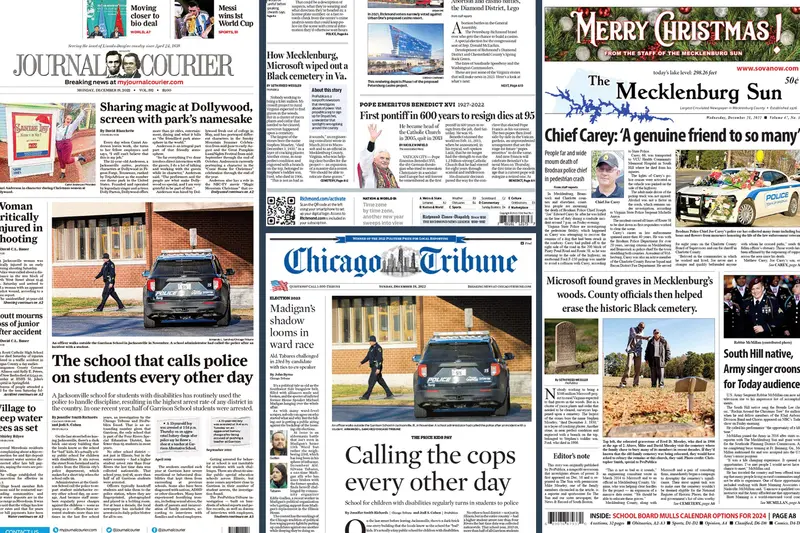Little Known Facts About News Articles.
Table of ContentsNews Articles - QuestionsThe 10-Minute Rule for News ArticlesHow News Articles can Save You Time, Stress, and Money.Some Known Facts About News Articles.The Definitive Guide for News Articles
Excellent expertise of different topics provides pupils an one-upmanship over their peers. Despite the fact that electronic and social media are conveniently available, we should not neglect just how important it is to review the papers. Parents must attempt and inculcate the practice of reviewing a paper as an everyday routine to proceed the legacy of the adored print medium.News stories likewise contain at the very least one of the following essential features family member to the desired audience: proximity, prominence, timeliness, human rate of interest, quirk, or consequence.
Within these restrictions, information tales additionally intend to be extensive. Among the larger and much more revered papers, fairness and balance is a major factor in presenting information.
Papers with a worldwide audience, for example, have a tendency to utilize a more official style of writing. News Articles.; typical style guides consist of the and the US Information Design Publication.
All About News Articles
As a guideline, reporters will certainly not make use of a long word when a short one will certainly do. They utilize subject-verb-object building and dazzling, energetic prose (see Grammar). They supply narratives, instances and allegories, and they hardly ever rely on generalizations or abstract ideas. News writers try to avoid using the exact same word greater than when in a paragraph (sometimes called an "echo" or "word mirror").
Nevertheless, headlines in some cases omit the subject (e.g., "Leaps From Watercraft, Catches in Wheel") or verb (e.g., "Feline female lucky"). A subhead (also subhed, sub-headline, subheading, caption, deck or dek) can be either a subordinate title under the main heading, or the heading of a subsection of the write-up. It is a heading that comes before the major message, or a team of paragraphs of the main text.

of an article subject, source, or interviewee), it is described as a drawn quotation or draw quote. Added signboards of any one of these types may appear later in the short article (particularly on succeeding web pages) to tempt more analysis. Journalistic internet sites often utilize computer animation techniques to swap one billboard for another (e.g.
Getting My News Articles To Work
Such signboards are also used as pointers to the post in other areas of the magazine or site, or as promotions for the item in various other publication or websites. Press release of the Swiss government. Common framework with title, lead paragraph (recap in bold), other paragraphs (information) and call information.

Example of a hard-lead paragraph NASA is recommending an additional area project. The spending plan requests approximately $10 billion for the task.
An "off-lead" is the second most vital front page news of the day. To "hide the lead" is to start the post with background details or information of secondary value to the readers, compeling them to check out even more deeply into a websites write-up than they need to have to in order to find the essential factors.
How News Articles can Save You Time, Stress, and Money.
Usual usage is that a person or 2 sentences each form their own paragraph. Journalists normally define the organization or structure of a newspaper article as an upside down pyramid. The necessary and most intriguing components of a tale are placed at the beginning, with supporting details adhering to in order of diminishing value.
It enables people to check out a topic to only the depth that their inquisitiveness takes them, and without the charge of details or nuances that they could consider unimportant, yet still making that information available to much more interested viewers. The upside down important link pyramid framework additionally enables write-ups to be cut to any type of arbitrary size throughout design, to fit in the room available.
Some writers begin their stories with the "1-2-3 lead", yet there are many sort of lead readily available. This layout invariably begins with a "Five Ws" opening up paragraph (as defined over), adhered to by an indirect quote that serves to support a significant aspect of the very first paragraph, and then a direct quote to sustain the indirect quote. [] A kicker can describe multiple things: The last tale current broadcast; a "satisfied" tale to end the show.
Longer articles, such as magazine cover write-ups and the pieces that lead the within areas of a newspaper, are understood as. Feature stories vary from straight information in several means.
The Basic Principles Of News Articles
An attribute's very first paragraphs usually connect an intriguing minute or event, as in an "unscientific lead". From the details of an individual or episode, its view promptly widens to generalities about the story's subject.

The Editor's Tool kit: A Recommendation Guide for Beginners and Professionals (2001) Allan M. Siegal and William G. Connolly. The New York City Times Guidebook of Style and Usage: The Authorities Design Guide Made Use Of by the Writers and Editors of the Globe's A lot of Authoritative Paper (2002) M. redirected here L. Stein, Susan Paterno, and R.